
The original Trust Deedby Robert Bruce Graham, Esq.The Charles R. Bishop Trust was established in 1895, during the lifetime of Mr. Bishop. He funded it with fourteen (14) promissory notes totaling $800,000 in all. The notes were made by Samuel M. Damon and came due at various times through 1905. The original Trust Deed was a lengthy instrument with numerous charitable, family and personal provisions. Essentially, the Trustees were to hold the notes and the proceeds of them in trust for specific purposes. One $50,000 note was to be distributed immediately to an individual. The interest from the remaining notes ($750,000) was to be used annually to make fixed payments to several charities during the term of the notes. When the notes were repaid, these payments would cease. Following repayment of all the notes, the Trustees were to distribute about $270,000 in principal to several charities and relatives of Mr. Bishop. The remaining assets, both principal and income, were then to be held for the Bernice Pauahi Bishop Museum, the Kamehameha Schools, and other charities. There were a few charities that were to receive income during the term of the notes and after their repayment. One of these was the Royal Mausoleum at Mauna‘ala. Another was Founder’s Day exercises at the Kamehameha Schools. Thus, at inception, the Trust was to provide income to several charities for the term of the notes, and thereafter, both principal and interest were to be held in perpetuity for the benefit of a few charities, including the Museum and the Schools. And, Mauna‘ala and Founder’s Day were income beneficiaries at all times. Amendments to the Trust DeedCharles Bishop amended the Trust Deed seven times between 1897 and 1914. Beneficiaries were changed and the terms and conditions of gifts were amended. As amended, the Trust Deed came to consist of fourteen sections but, as the notes were paid and final distributions were made, various sections of the Trust became obsolete. Eight of the sections are no longer relevant. What remains are Sections Fifth, Eighth, Ninth, Tenth, Eleventh and Twelfth. If read without understanding that other sections have lapsed and that almost all sections were variously amended, these sections may appear disjointed or confused.The Bernice P. Bishop Museum TrustIn addition to the Charles R. Bishop Trust created in 1895, Mr. Bishop also endowed the Bernice P. Bishop Museum by a separate Deed of Trust made in 1896.Mr. Bishop had founded the Museum on the original campus of the Kamehameha School for Boys and had transferred assets to the Bernice Pauahi Bishop Estate (“KSBE”) with directions that the income from them be used for the support of the Museum. In 1896, the KSBE Trustees petitioned the probate court to separate the Museum from KSBE, arguing that it had been improper for them to accept grants to KSBE for any purpose other than the Kamehameha Schools. Mr. Bishop agreed and the Court authorized the KSBE Trustees to transfer the Museum’s assets from KSBE to a new Museum Trust created on October 13, 1896. The Museum received its building on the Kamehameha campus and all of the exhibits and collections it contained, as well as most of the Ahupua‘a of Waipio. Initially, the Museum had a seven member board, five of whom were trustees of KSBE and the Charles R. Bishop Trust. There were overlapping boards until more recent times when the Museum Trust was converted to a Foundation. Myron Thompson was the last trustee to serve concurrently on the Boards of KSBE, the Charles R. Bishop Trust and the Foundation. Charles R. Bishop amended the Charles R. Bishop Trust several times after the Museum Trust was created. In some amendments, the Museum was a mandatory beneficiary. In others, it was among various charities named to benefit from Mr. Bishop’s gift. There is correspondence that demonstrates that Mr. Bishop was concerned that the Museum’s director should not have direct access to the Museum’s endowment. It is clear that Mr. Bishop wanted the trustees of the Museum Trust and of the Charles R. Bishop Trust to be businessmen who would protect the endowment funds from improvident expenditure by an enthusiastic Museum director. The Trust Deed todayWith its many amendments and the passage of time, the Trust Deed today is a wholly charitable instrument. All provisions for family members and others are obsolete. The rights of charities that received funds only while the Trust held the promissory notes have expired. Lump sum final payments to other charities have been made and some charities are defunct. None of these charities has any continuing interest under the Trust Deed. | 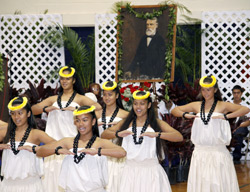 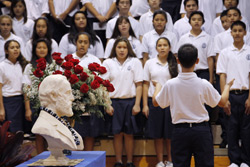
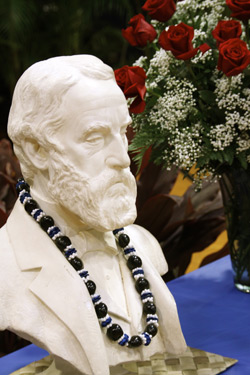
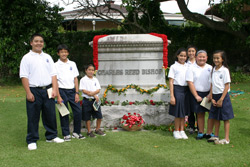
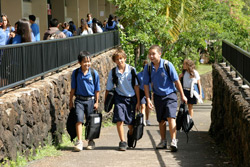 |